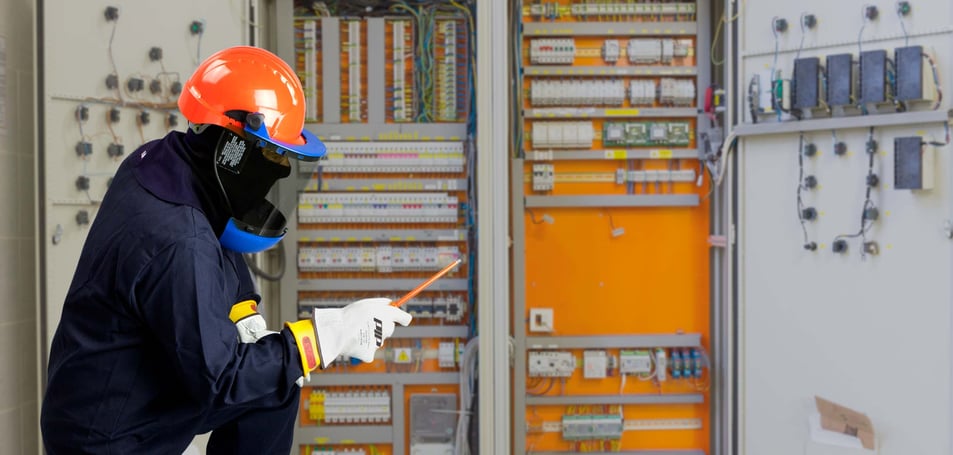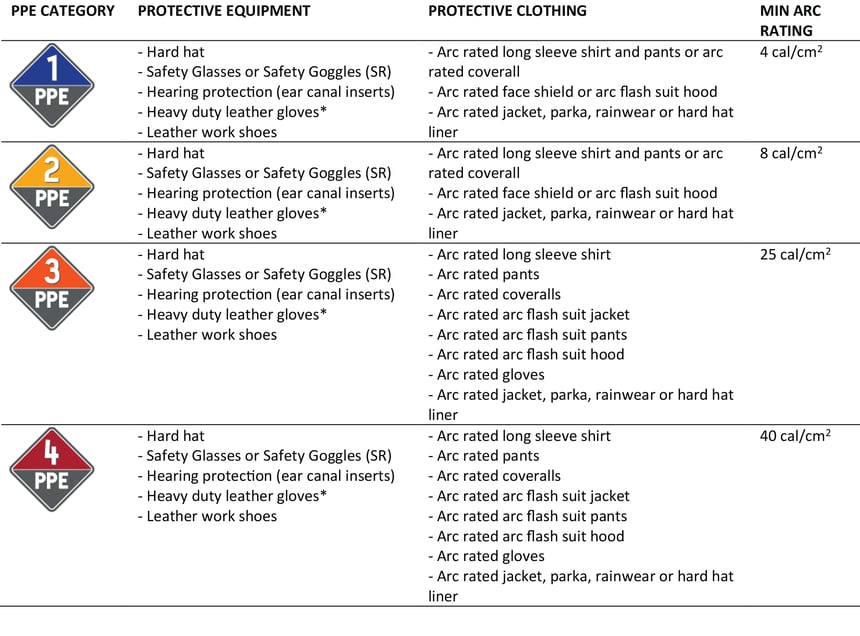- HOME
- PRODUCTS
- Arm Protection (119)
- Cold Stress (1)
- Critical Environment (170)
- Electrical Safety (133)
- Emergency Responder (37)
- Ergonomics (12)
- Eye Protection (356)
- First Aid (17)
- Hand Protection (1447)
- Head Protection (103)
- Hearing Protection (49)
- Heat Stress (37)
- Protective Clothing (454)
- Respiratory Safety (44)
- Warning Beacons (28)
- BRANDS
- CHANNELS
- Sales Tools
- NEWS, ARTICLES & EVENTS
- Log in or Sign Up
- PRODUCTS
- /// Hand Protection
- /// Hand Protection
- Chemical Resistant Gloves
- Cold Protection Gloves
- Cut Resistant Gloves
- Disposable Gloves
- Fabric Work Gloves
- General Purpose Gloves - Coated
- General Purpose Gloves - Uncoated
- Heat Protection Gloves
- High Performance Gloves
- Leather Drivers Gloves
- Leather Palm Gloves
- Parade & Uniform Gloves
- /// Head Protection
- /// Eye Protection
- /// Hearing Protection
- /// Respiratory Safety
- /// Protective Clothing
- /// Arm Protection
- /// Heat Stress
- /// Warning Beacons
- /// Cold Stress
- /// Ergonomics
- /// First Aid
- /// Welding Protection
- /// Controlled Environment
- /// Electrical Safety
- /// Emergency Responder
- /// Hand Protection
- BRANDS
- CHANNELS
- SALES TOOLS
6 KEY THINGS TO UNDERSTAND ARC FLASH

There are few things no utility worker wants to experience – ARC flash is one of them. The phenomenon is described as a sudden, bright, blinding light and heat that occurs because of a rapid release of energy between two bus bars. As much as 80% of all electrical injuries are burns resulting from an ARC flash caused by the ignition of flammable clothing. Let’s highlight six key facts to help understand more about ARC flash risks.
What Is An ARC Flash?
An ARC flash is caused by the ionization of air that can occur under certain conditions during a fault, or short circuit of high voltage equipment. The result is the formation of an electrical ARC of ionized gas that can discharge a violent pressure wave with extreme temperatures as high as 35,000°F.
The violent pressure wave that’s discharged can reach up to 2,000 lbs./square foot, causing serious risks including:
- Ear drum damage which starts at 720 lbs./sq. ft
- Lung damage which typically begins at 1,728 lbs./sq. ft
- Sound that exceed 140 dB
- Molten metal and shrapnel that exceed 700 mph
Air and materials exposed to ARC flash expands to be 67,000 times their normal size. A blast can occur when Copper vaporizes as it expands 1,670 times its normal size.
What Causes ARC Flash?
ARC flash can be initiated through accidental contact, equipment which is underrated for the available short circuit current, contamination or tracking over insulated surfaces, deterioration, or corrosion of equipment. In the United States, ARC flashes occur as often as five to 10 times per day.
How Do We Protect Workers?
ARC Rated (AR) Garments help provide flame and thermal break open protection from direct exposure to an electrical ARC flash. AR garments are designed and treated to help limit exposure and burn percentage as a result of the electrical ARC flash incident.
In order for a garment to comply with OSHA 1910.269 or NFPA 70E, it must go through two basic testing requirements of ASTM F1506:
- A sample of fabric must self-extinguish with less than 2 seconds after flame and less than 6″ char length according to ASTM Test Method D6413. This flammability test applies to an initial sample and after 25 wash cycles.
- The fabric must be tested for ARC Thermal Performance according to ASTM Test Method F1959. The results of the ARC Thermal Performance testing must be reported to the end user as an ARC Rating on a garment label.
*ASTM F1959 is performed to determine a product or material’s response to an electrical ARC event by establishing an ARC rating (a value attributed to materials describing their performance in an ARC flash hazard). The ARC rating is expressed in cal/cm2 as either an ATPV (ARC thermal performance value- indicating a 50% probability of crossing the Stoll Curve model, which is not necessarily a second degree burn) or an EBT (breakopen threshold energy.)
Flame resistant (FR) garments earn their designation because they are made of fabrics that are inherently resistant to or are treated to be resistant to igniting when exposed directly to flame. The material resists ignition and/or will self-extinguish when ignited and will not melt.
Flame resistant fabric undergoes a Vertical Flame Test (ASTM D6413). To be considered flame resistant, the fabric must self-extinguish within 2 seconds after flame and have a char length of 6” or less. This flammability test applies to an initial sample and after 25 wash cycles.
How Is PPE Rated For ARC Flash?
ARC Thermal Performance Value (ATPV) represents incident energy that results in 50% probability of a second-degree burn (when skin is exposed to 1.2 cal/cm² of incident energy). Materials with an ATPV rating tend to be stronger but offer less thermal protection. Example: 8 cal/cm2.
Energy Break Open Threshold (EBT): Represents incident energy that results in 50% probability of a break open. The material breaks open during ARC testing before a burn could be registered.
Both ATPV and EBT ratings may be reported, but the lower of the two ratings defines the official ARC rating of the garment and must be on the garment label.
What Do You Need To Wear To Be Compliant?
There are many variables to consider when selecting protective clothing. Most importantly, the employer must perform a Hazard Risk Analysis for the workplace to identify risks and set the appropriate boundaries. The results of this analysis will then guide the employer to the level of protection that is needed.
The National Fire Protection Association (NFPA) uses four ARC flash PPE Categories to classify ranges of ARC flash hazards and the corresponding requirements for Personal Protective Equipment (PPE). PPE Category 1 and 2 requirements are typically met with single-layer ARC/FR garments and lighter head and face gear. To meet higher risk hazard levels such as PPE Category 3 or 4, multi-layer garments and headgear with more coverage is required.

* NFPA 70 E Table 130.7(C)(16) Note 1 – The combination of rubber insulating gloves and leather protectors satisfies the arc flash protection requirements.
IMPORTANT: All AR garments are flame-resistant, however not all FR garments are rated for ARC flash protection.
Enforcement & Regulatory Points
- OSHA does not have a stand-alone standard for dealing with ARC flash protection. The federal agency includes its requirements for ARC flash personal protection in 29 CFR 1910 Subpart S and OSH 1926 Subpart K. It also instructs companies to refer to the National Electrical Code, NFPA 70E, the Standard for Electrical Safety in the Workplace.
- The National Fire Protection Association (NFPA) 70E is a comprehensive standard that establishes best electrical safety practices standards on how to protect industrial workers from electric ARC flash and ARC blast exposure and resulting potential injury and death.
- NFPA 70E applies to employees who work on or near exposed energized electrical conductors or circuit parts. This includes electrical maintenance personnel, operators, troubleshooters, electricians, linemen, engineers, supervisors, site safety personnel or anyone exposed to energized equipment of 50 volts or more.
- In accordance with OSHA 1910.137, employers must provide personal protective equipment (PPE) to their employees and ensure its use including rubber insulating gloves and rubber insulating sleeves.
Working with energized equipment can pose serious hazards. If you’re interested in learning more about PIP’s PPE solutions that help protect against ARC flash, comment below or contact a local PIP Sales Representative today.
ARC Flash Hoods: Close the Gap Between Comfort and Compliance
When working in high voltage environments, workers must protect themselves against ARC flash...Hidden Risks on the Job Site
Nearly five million workers currently make up the American construction industry. That includes...Construction Safety Week 2021: Trending Safety Solutions In Construction
According to OSHA, the continuously evolving construction industry accounts for one in five...Proposition 65 | Privacy Policy | Contact Us | Full Site
© 2012-2025Protective Industrial Products, Inc. All rights reserved.








